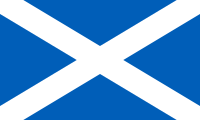User:MacRusgail/Sandbox9
Latter Day Saint movement in Scotland
http://eom.byu.edu/index.php/British_Isles,_the_Church_in
Membership counts at the end of 1851 showed 33,000 members of the Church in the United Kingdom and Ireland and 12,000 in Utah. Although total membership in the British Isles declined after the mid-1850s due to emigration and attrition, substantial additions through baptisms continued through the 1860s.
From 1870 to the mid-1950s, the Church did not experience sustained growth in the United Kingdom and Ireland.
But the dedication of the London Temple (in Lingfield, Surrey) in September 1958 and the creation of the Manchester England Stake on March 27, 1970, initiated a second growth phase of membership; by 1990 the Church had more than 160,000 members in 9 missions, 40 stakes, and more than 330 wards and branches in the British Isles. The strength of the Church in the United Kingdom and Ireland in 1990 is indicated by the number of stakes: thirty-two in England, five in Scotland, two in Wales, and one in Northern Ireland. Branches (congregations) in the Republic of Ireland, whose members are not as numerous as in other areas, are under the jurisdiction of mission districts rather than a stake.
When the missionaries first arrived in the British Isles, they went to Preston, England, where Joseph Fielding's brother, Rev. James Fielding, had invited him and his missionary companions to preach at his Vauxhall Chapel. James's enthusiasm waned when it became apparent that he risked losing his congregation, and he promptly closed the chapel to the missionaries. They then taught in private homes, and a week later baptized the first nine British converts in the river Ribble, at Preston. By Sunday, August 6, there were nearly fifty converts in Preston, and Elder Heber C. Kimball organized the Preston Branch. In two months, membership had reached 140, and the original branch was divided into five separate branches in October. Missionary work was extended to Bedford, and to Alston, near the Scottish border, where the missionaries had relatives. Elder Kimball preached in the villages of the Ribble Valley.
APOSTOLIC MISSION, 1838-1841. The second major LDS missionary thrust in the British Isles began on July 8, 1838, at Far West, Missouri, when the Prophet Joseph Smith received a revelation instructing the Twelve Apostles to prepare to serve a mission in Great Britain.
The Britain of those days was ripe for a message of hope, and the preaching of a restored gospel of Jesus Christ was timely. By June 1842 there were 8,245 members of the Church in the United Kingdom and Ireland. Six years later there were 18,000, and by the end of 1851 England had 24,199 Latter-day Saints, Wales had 5,244, Scotland had 3,291, and Ireland had 160-a total of almost 33,000-and an additional 11,000 had already emigrated to America.
In 1851 there were more members of the Church in the United Kingdom and Ireland than there were in Utah (12,000).
THE CHURCH IN BRITAIN IN THE TWENTIETH CENTURY.
In the mid-1950s, membership in the United Kingdom and Ireland stood at 9,000, when the second major phase of the growth and development of the Church in the British Isles began. Emphasis was given to "staying and building," and steps were taken to ensure that Church members in the United Kingdom did not need to emigrate to enjoy all the blessings of the Church membership.
President David O. McKay dedicated the London Temple, at Lingfield, Surrey, on September 7-9, 1958.
THE CHURCH IN THE BRITISH ISLES IN 1990. Britain, like many other parts of Europe, has experienced a decline in religious observance since World War II. Many British churches now have congregations that are predominantly middle-aged to elderly, and largely female. Latter-day Saints in the United Kingdom and Ireland, in contrast, are experiencing the second flowering of the Church there. About 37 percent of British LDS baptisms came between 1837 and 1869, and nearly 50 percent have come since 1950. During the 1970s and 1980s, a new LDS congregation was established in the United Kingdom and Ireland almost every two weeks, and a new chapel was dedicated almost every month.
BRITISH CONTRIBUTIONS TO THE CHURCH.
All of the men who have served as President of the Church, from Joseph Smith to Ezra Taft Benson, trace their ancestry back to the British Isles. The ancestors of President Benson, for example, came from Caversham, Oxfordshire. All of the Church Presidents except Joseph Smith, Harold B. Lee, and Spencer W. Kimball labored as missionaries in Great Britain.
The Church's Sunday School organization was founded in 1849 by Scotsman Richard Ballantyne.
Hinduism in Scotland is of relatively recent provenance, with the bulk of Scottish Hindus having settled there in the second half of the 20th century. Some Scottish Hindus prefer not to be called 'Asians' [1] as this term is often used to refer to Scotland's Pakistani community. At the 2001 Census, 5,600 people identified as Hindu, which equated to 0.1% of the Scottish population.[1]
Temples
There are no temples in the country, and Scottish Latter Day Saints have to travel to Northern England to use one of the temples in Preston.
See also
References
- ^ ANALYSIS OF RELIGION IN THE 2001 CENSUS: Summary Report www.scotland.gov.uk, accessed 3 Dec 2009
Joseph Smith of partial Scottish ancestry through his mother's Mack line of Inverness.
http://eom.byu.edu/index.php/Smith_Family_Ancestors
http://eom.byu.edu/index.php/Ballantyne,_Richard
Richard Ballantyne
Hugh Findlay David O. Calder David S. Baxter William Budge Andrew Black (film director) Brian Adam Eilley Bowers David Eccles (businessman) John Menzies Macfarlane John Sharp (Mormon) Charles W. Nibley Archibald Gardner
External links
- [http://contentdm.lib.byu.edu/cdm4/document.php?CISOROOT=/EoM&CISOPTR=4391&CISOSHOW=5562&REC=1%7C
http://eom.byu.edu/index.php/British_Isles,_the_Church_in
